MAT540 Week 10 Homework: Chapter 13 Queuing Analysis Problems
VerifiedAdded on 2022/12/30
|7
|835
|57
Homework Assignment
AI Summary
This document presents a comprehensive solution to a queuing analysis homework assignment, addressing several problems related to waiting line systems. The assignment explores various scenarios, including single-server and multi-server queuing models, and analyzes key performance indicators such as average queue length, waiting time, and system utilization. The solutions demonstrate the application of queuing theory to optimize service operations, evaluate the impact of adding servers or resources, and make informed decisions regarding cost-benefit trade-offs. The document includes calculations, interpretations, and recommendations based on the analysis of different queuing scenarios, providing a practical understanding of queuing concepts and their application in real-world business contexts, specifically within the realm of management science. The assignment covers topics like calculating the impact of increased arrival rates, evaluating the cost-effectiveness of adding service windows, and determining the optimal number of servers to minimize waiting times and maximize revenue. Moreover, the document incorporates references to relevant academic sources to support the analysis and conclusions.
1 out of 7
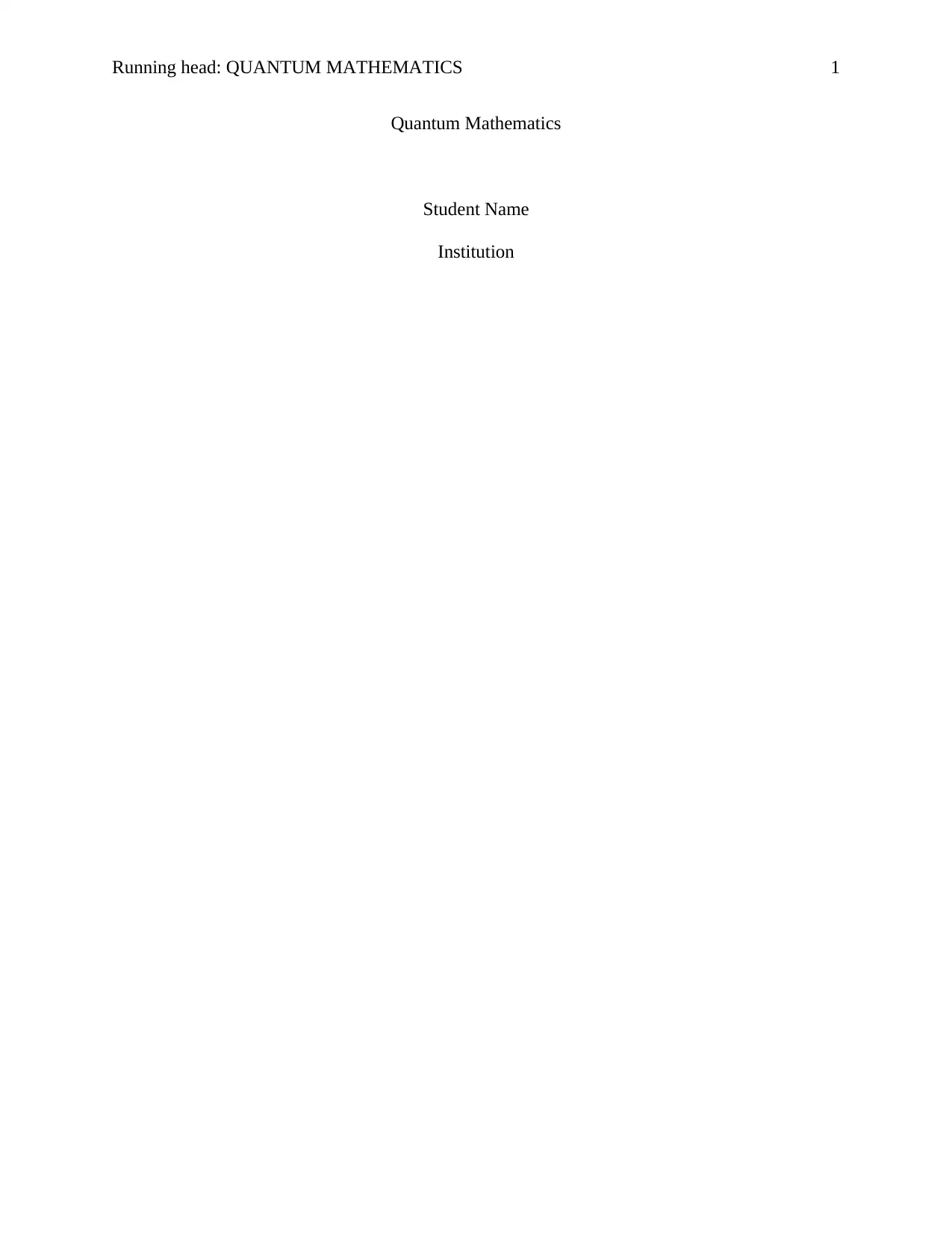
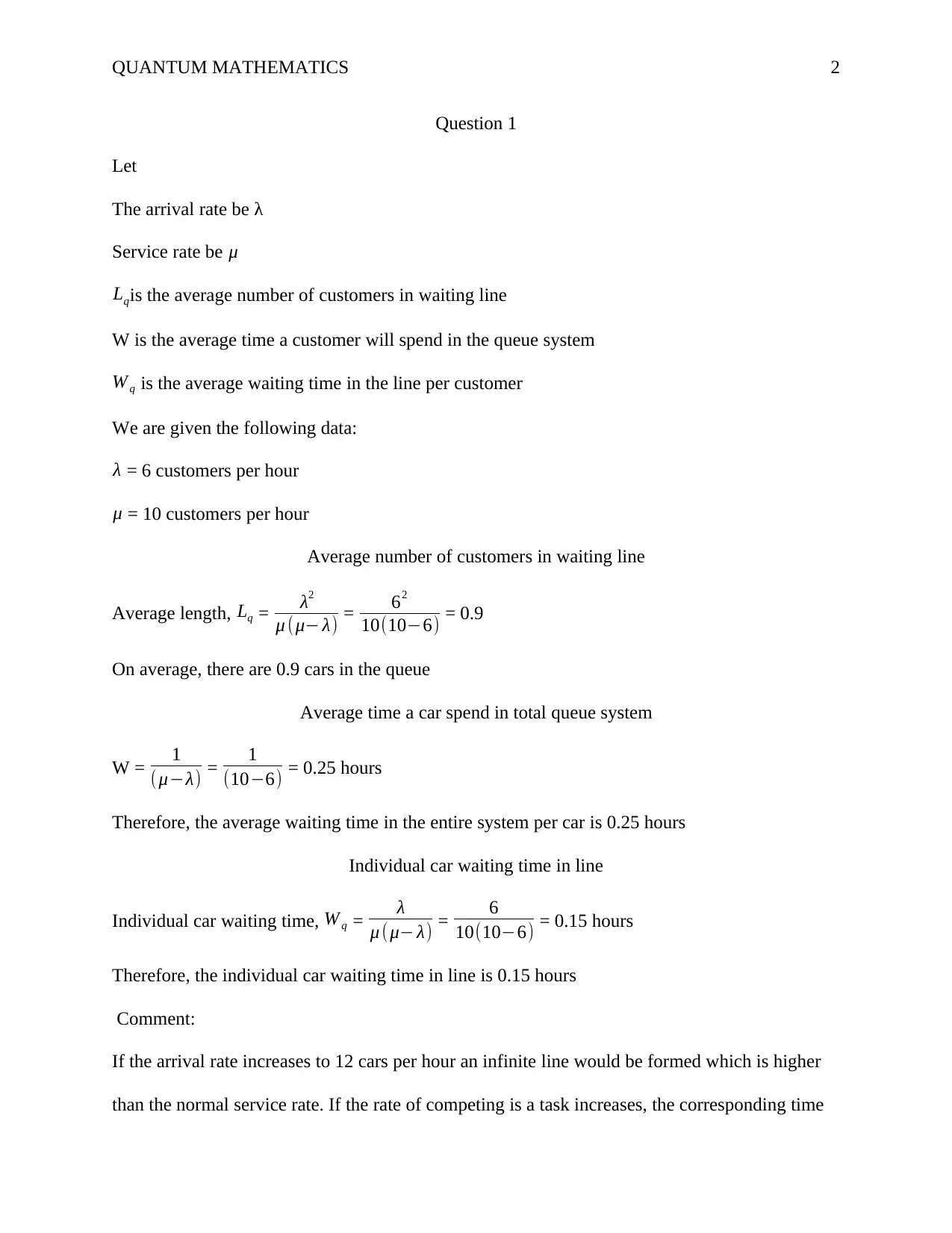


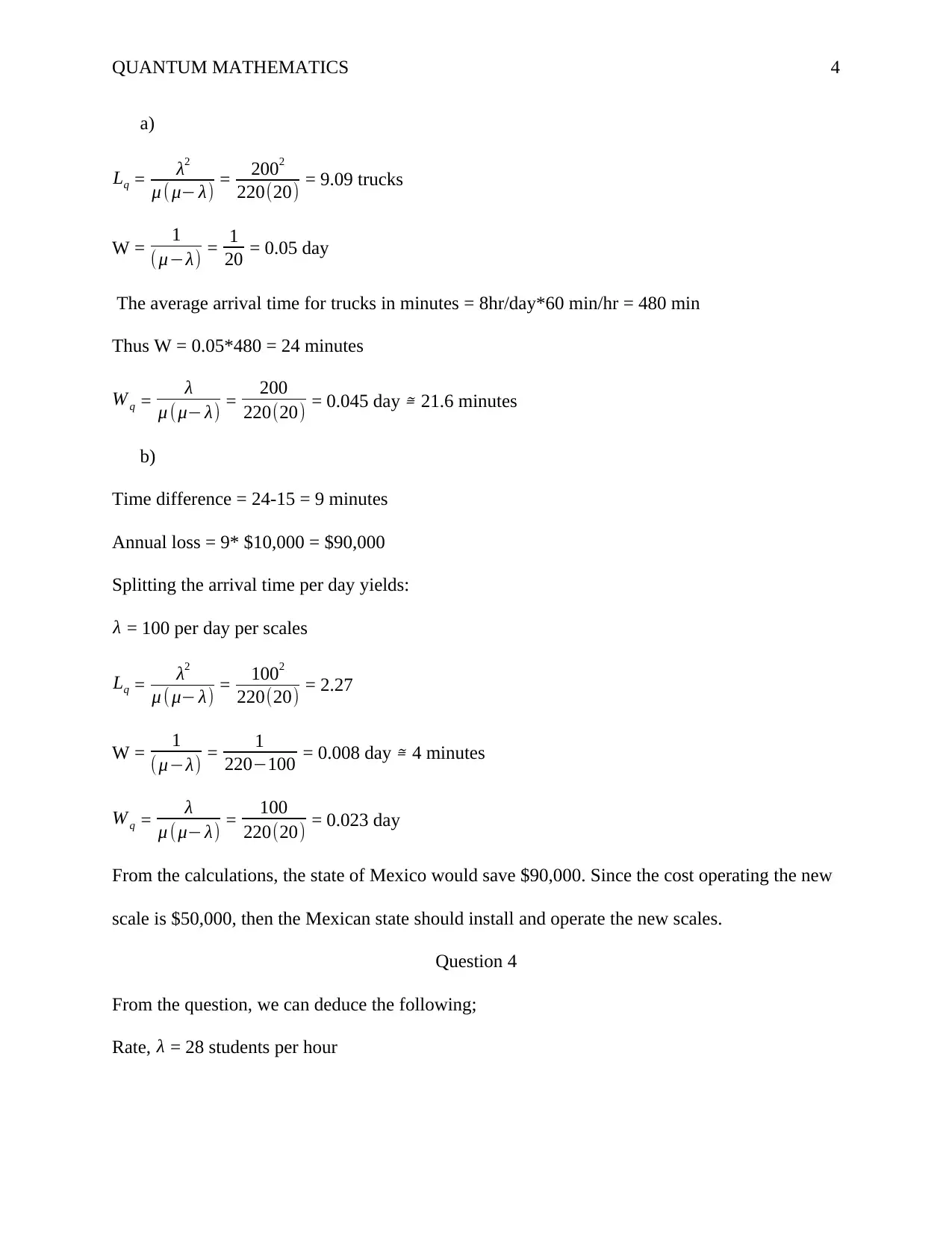
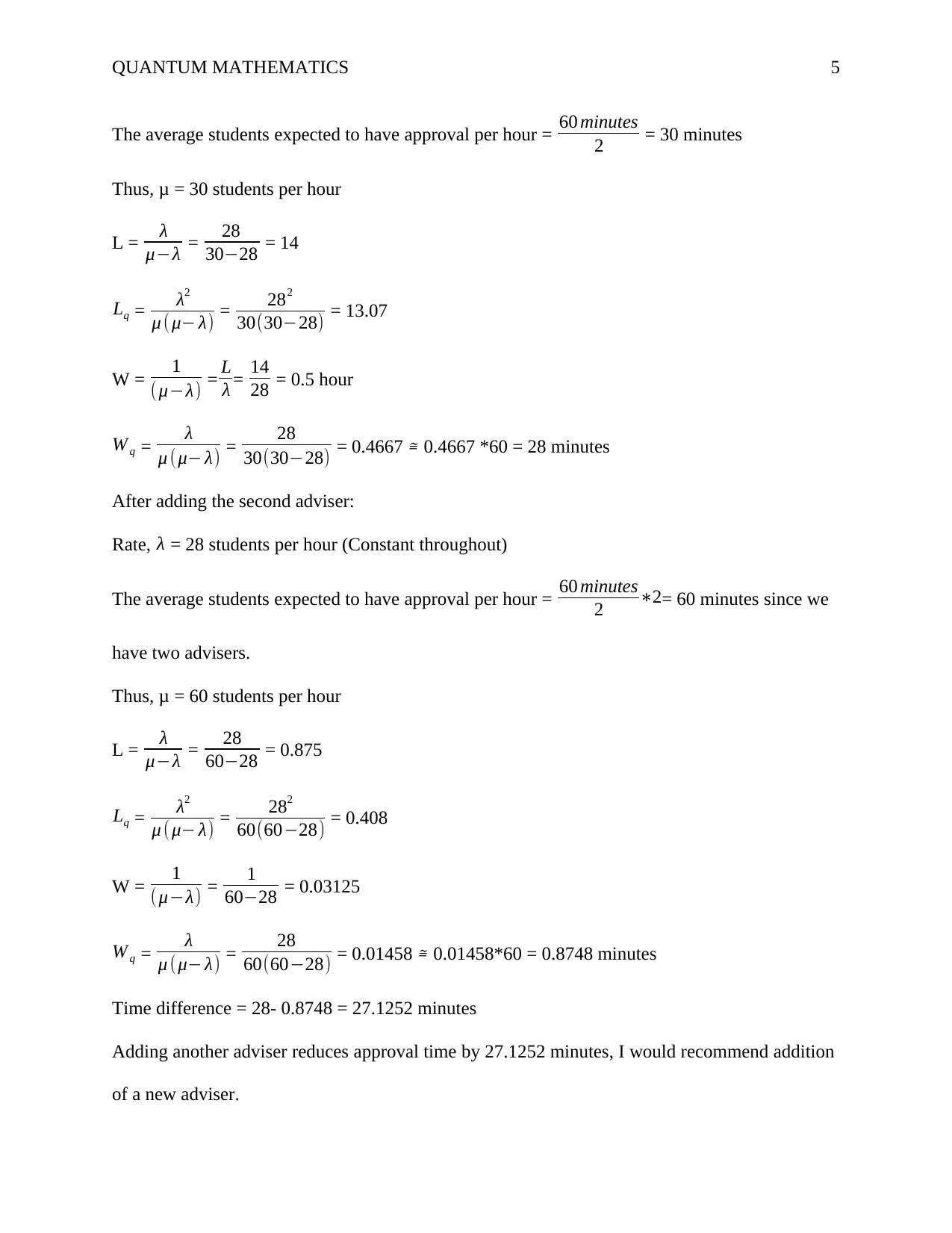
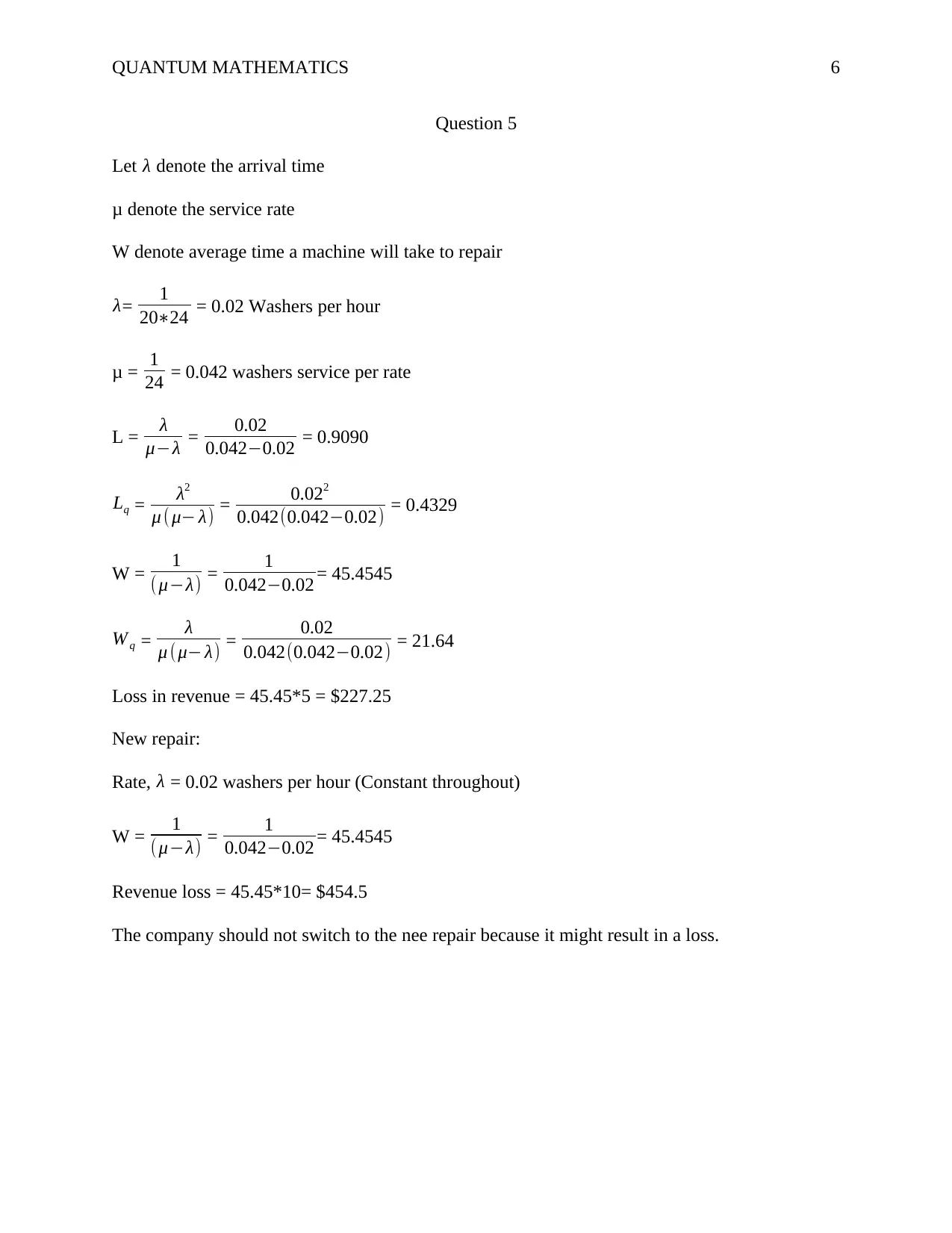
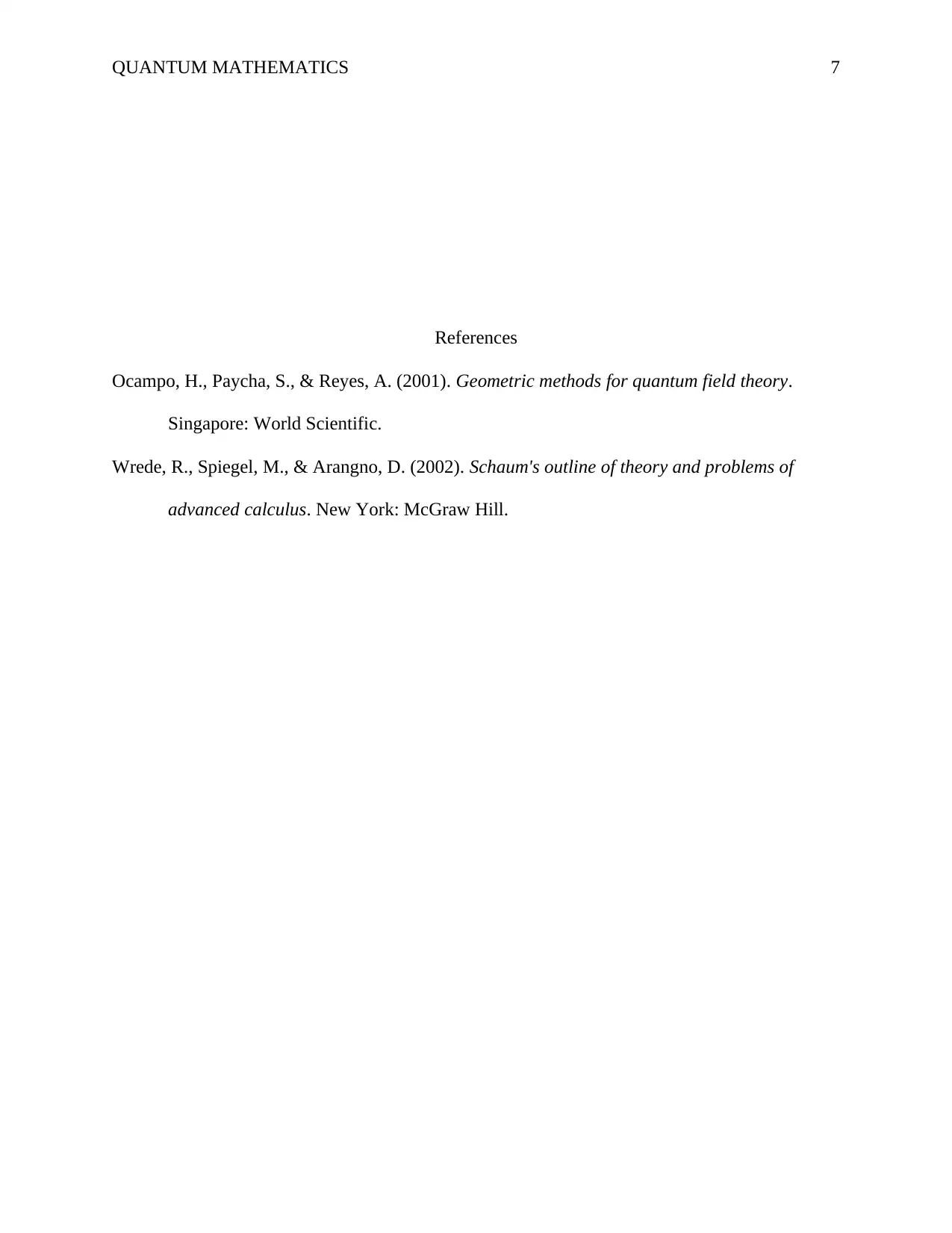

![[object Object]](/_next/static/media/star-bottom.7253800d.svg)